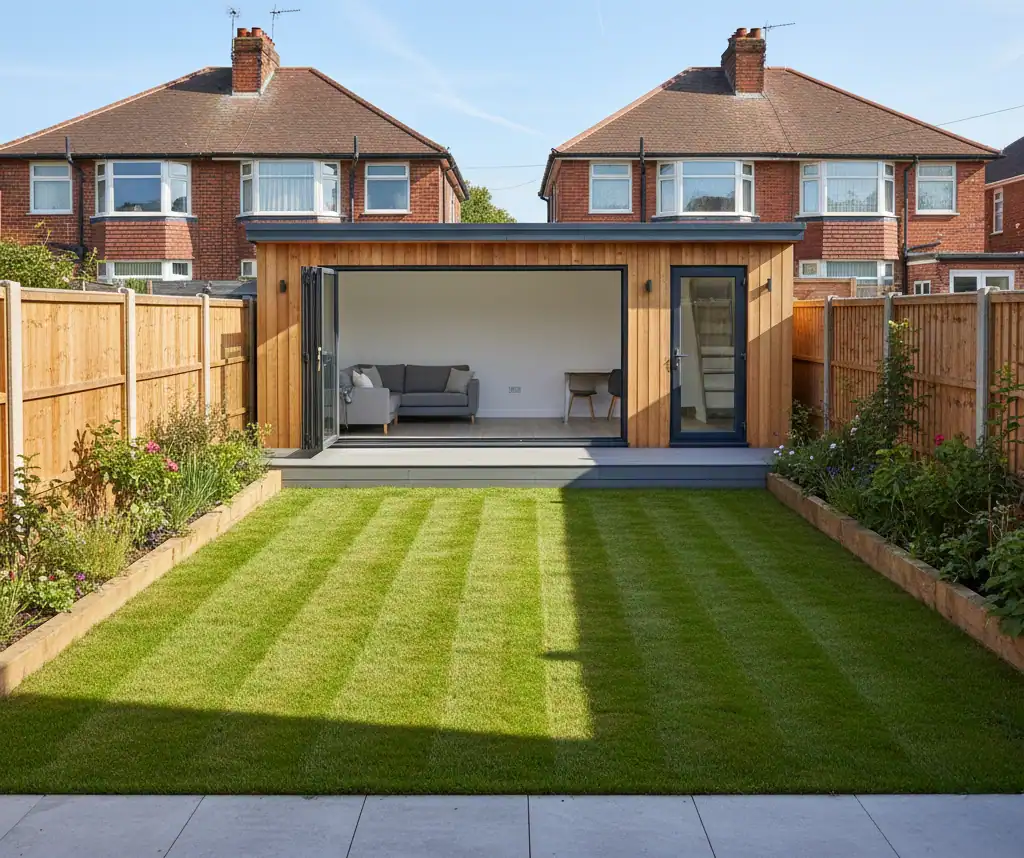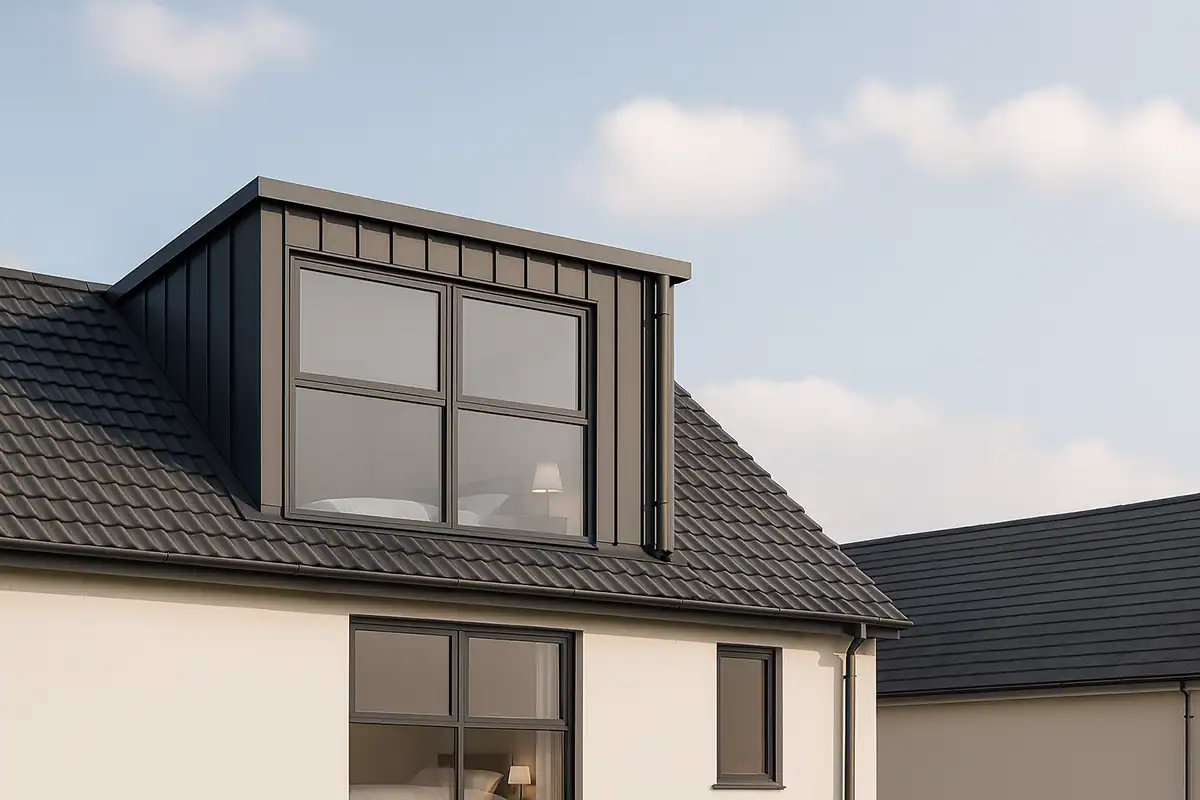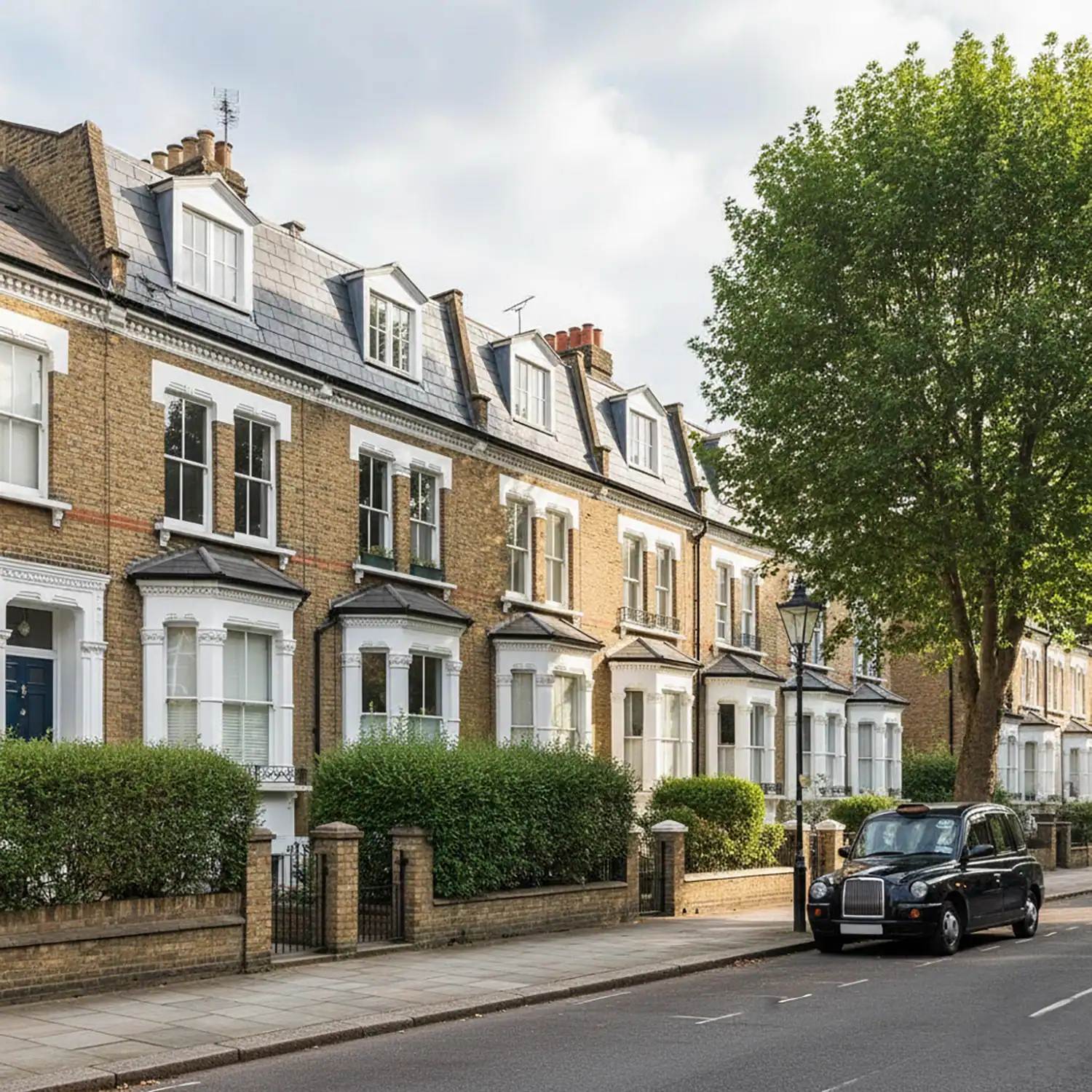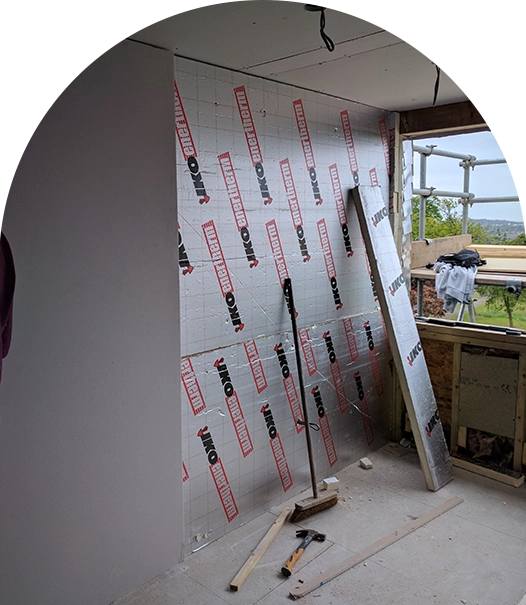Do you need planning permission to build a shed? What about a garage? Or garden office?
This is the question I get asked most.
Many homeowners want extra space. They build a garden structure. But then problems happen.
What problems?
- They add a toilet
- They build too high
- They use the garden building for sleeping
Here’s the answer: You can build in your garden. But you must follow rules.
Do you need planning permission? It depends on:
- How big it is
- Where you put it
- What you use it for
I will explain these planning permission rules. Step by step.
Do I Need Planning Permission for a Shed?
Most garden sheds fall under permitted development rights. This means you won’t need formal planning permission. But you can’t build anything anywhere.
The key is knowing the difference. What’s allowed? What needs an application? AC Design Solution has helped thousands of London homeowners with these rules. We’ll show you what you need to know.
Planning Permission for My Garden: Understanding Shed Planning Permission
You can build your shed or garden building without the need for planning permission. But only if it Permitted Development rules apply to your house
These rules are not suggestions. They are legal rules. The local planning department checks them.
Real example: We helped a client in Ealing. They built a shed. It was 3.5 metres high. It was within 1 metre of their boundary. This was wrong.
What happened? The planning department said no. They had to rebuild it. It cost thousands of pounds.
Permitted Development Outbuildings
Permitted development is your legal right. You can make some changes to your property. You don’t need to apply for planning permission. This covers most garden structures. But only when they meet size, height, and location limits.
Permitted development is fast and cheap. No planning fees. No waiting for approval. No risk of rejection. But go outside these limits? You’ll need full planning permission.
Exceptions
Some situations remove your permitted development rights:
Listed buildings – Any outbuilding needs planning permission
Article 4 directions – Your council may have removed permitted development rights in your area
Previous planning conditions – Earlier applications might have limited your rights
Designated land – Conservation areas, National Parks, and Areas of Outstanding Natural Beauty have stricter rules
We check these factors first at AC Design Solution. Always. Before we advise any client.
Do You Need Planning Permission for a Brick Shed?
Short answer: Material doesn’t matter.
Timber, brick, metal, concrete. The same rules apply to all materials.
But here’s something good to know. Brick buildings often signal permanent use. Planning officers might look more closely. They want to check you’re not creating separate living space.
Common mistake: Some clients think matching materials to their house means planning permission is needed. Wrong.
You can build a brick outbuilding under permitted development. Just make sure it meets all other rules.
What is the Maximum Size Garden Building Without Planning Permission?
There’s no single maximum size. Instead, you have three limits working together:
Coverage limit: Max 50% of your original garden area
Height limits: These change based on distance from boundaries
Floor area limits: Different rules apply in protected areas
The 50% rule trips up lots of people. Here’s what it includes:
- Your new garden building
- All existing extensions
- Conservatories
- All timber garden structures
We work out this total area carefully for every client. Why? To avoid nasty surprises later.
Garden Building Within 1 Metre of Boundary
Height limits are critical here. Any garden structure within 2 metres of a boundary has limits. Maximum overall height: 2.5 metres.
Important fact: Height gets measured from the highest adjacent ground level. Not from where you dug foundations. Not from added decking.
Appeal case APP/P0119/X/11/2150375 set this rule. Every local planning office follows it strictly. For full details, see the government’s permitted development rights for householders technical guidance.
Other Criteria to Consider Regarding Planning Permission for Your Garden Room
Incidental vs. Ancillary Use
This rule trips up more clients than any other. Your outbuilding must be used for purposes linked to your house. Not ancillary.
What does this mean?
Linked use includes:
- Storage
- Hobbies and crafts
- Home office (day use only)
- Gym or exercise room
Separate use (this needs planning permission):
- Sleeping rooms
- Separate kitchen facilities
- Independent living space
- Bathroom or toilet facilities
Add a toilet? You need planning permission. Use it for sleeping? You need planning permission.
Special Considerations
Listed Buildings
Is your property listed? Any grade counts. You’ll need planning permission for any outbuilding. Size doesn’t matter. Location doesn’t matter.
You’ll also need listed building consent. That’s a separate application process.
Designated Land
Some areas have extra limits. These keep local character. Areas include:
- Conservation Areas
- National Parks
- Areas of Outstanding Natural Beauty
- World Heritage Sites
Extra restrictions apply:
- Side extensions: Need planning permission
- 20 metre rule: Buildings more than 20 metres from your house get limited to 10 square metres
- More checks: Even permitted development gets closer examination
The Most Important Factors Are:
Five key factors decide everything:
- Distance from boundaries – This sets height limits
- Total coverage – Cannot exceed 50% of original garden
- Intended use – Must stay linked to the house
- Location – Cannot be forward of your main house front
- Design features – No balconies, verandas, or raised platforms
How Much Does Planning Permission Cost?
Your outbuilding doesn’t qualify for permitted development? You’ll need to submit a householder planning application.
Planning fees changed on 1st April 2025. Householder planning application fees went up a lot. Now costs £528 for single dwellinghouse applications.
But that’s just the application fee. You’ll also need:
- Drawings – £800 to £1,500
- Planning statement – £500 to £800
- Maybe extra surveys – Depends on your property
At AC Design Solution, we handle everything. We make sure your application gets approved first time.
How to Apply for Planning Permission for Your Garden Office
Need to apply for planning permission? Here’s the process:
Step 1: Pre-application advice Talk to the planning department first. Discuss your plans.
Step 2: Prepare drawings Get detailed plans. Show the garden building in context.
Step 3: Submit a planning application Include all required documents. Pay the fees.
Step 4: Consultation period 21 days for neighbour comments.
Step 5: Decision Usually takes 8 weeks.
We’re CIAT Chartered Architectural Technologists. We prepare planning permission applications that planning officers want to approve. We focus on how your garden office makes your property better. Not worse.
Outbuildings in Conservation Areas
Conservation areas have extra restrictions. They preserve local character. Even permitted development may need prior approval.
Prior approval means submitting your plans for review. You do this before construction starts.
The planning authority checks:
- Visual impact on the street scene
- Effect on neighboring properties
- Compliance with conservation area guidelines
- Materials and design fit
Outbuildings in National Parks, AONB, WHS etc.
These designated areas have the strictest controls:
10 square metre limit: Buildings 20+ metres from your house get limited to 10 square metres
No side extensions: Need planning permission
Enhanced design requirements: Even for permitted development
Material restrictions: May need to match local style
Curtilage / Garden Land
Understanding your curtilage matters. It’s crucial for calculating the 50% coverage rule.
Curtilage includes land around your house used for home purposes:
- Gardens and lawns
- Driveways and parking areas
- Domestic outbuildings
- Vegetable plots
It doesn’t include:
- Land separated by public roads
- Agricultural fields or paddocks
- Land not used for home purposes
Recent court case: Land separate from the main garden doesn’t count as curtilage. Even if the family uses it.
Summary of Limits and Restrictions on Outbuildings
Size and Coverage:
- Max 50% total coverage of original garden
- No single size limit
- But coverage rule applies
Height Restrictions:
- 4 metres max for dual-pitched roofs
- 3 metres max for other roof types
- 2.5 metres max within 2 metres of any boundary
- 2.5 metres max eaves height
Location Requirements:
- Not forward of main house front
- Single-story only
- No verandas, balconies, or raised platforms
Use Restrictions:
- Incidental use only
- No sleeping accommodation
- No independent living facilities
Legislation for Class E of Part 1
Outbuildings fall under Class E of Part 1. This is part of the General Permitted Development Order.
This law sets out what you can build. No planning permission needed. But only under certain conditions.
The current order is from 2015. It has some changes since then. It’s the legal framework. It covers all permitted development rights for homes.
Removal of Class E Rights for an Outbuilding
Your permitted development rights can be taken away. This happens in several ways:
Article 4 directions: Local authority removes rights
Planning conditions: Previous applications restrict your rights
Designated areas: Special restrictions apply
Listed building status: Your property has heritage protection
Always check with your local planning authority first. Do this before you start building. These restrictions aren’t always obvious.
Maximum Size and Height of an Outbuilding Under Permitted Development
The max size depends on many factors. They work together:
Standard homes:
- Height: 4m (dual-pitch), 3m (other roofs), 2.5m (within 2m of boundary)
- Coverage: 50% of original garden
- Eaves: 2.5m max
Special areas (Conservation Areas, National Parks, etc.):
- Same height rules
- Extra 10 square metre limit for buildings 20+ metres from house
- More design checks
Understanding the Height Requirement
Height measurement is tricky. Most people get this wrong.
Key rule: Height gets measured from the highest adjacent ground level.
Appeal case APP/P0119/X/11/2150375 set this rule.
This means:
- Digging foundations doesn’t reduce height
- Adding decking doesn’t help
- On slopes, use the highest point next to the building
- Use ground level, not floor level
Building Regulations for Outbuildings
Most outbuildings under 15 square metres don’t need building regulations approval. However, exceptions include:
- Any sleeping accommodation requires both planning permission and building regulations
- Buildings over 30 square metres always need building regulations
- Electrical and plumbing work may need separate approvals
Frequently Asked Questions
Do I Need Planning Permission for a Garage in My Garden in England?
Usually no. You may be able to build a garage without the need for planning permission. But it must meet permitted development criteria.
Your garage must be:
- Single storey only
- Maximum overall height 4m (dual-pitch roof) or 3m (other roofs)
- Max 2.5m high if within 2m of any boundary
- Not forward of your house’s main front
- Used only for purposes linked to your home
Got living space? Toilet facilities? Over these limits? You’ll need to get planning permission.
What is the Maximum Size of a Garden Shed Without Planning Permission?
No set maximum size exists. Your shed gets limited by the 50% coverage rule. This is based on the area of land around your original house.
You can build any size shed if:
- Total area of ground covered by all garden buildings stays under 50% of your original garden
- Height rules are met based on boundary distances
- It’s used only for basic purposes (storage, hobbies, home office)
Example: Original garden was 200 square metres. All outbuildings combined cannot go over 100 square metres total area.
What are Two Ways You Can Avoid the Need for Planning Permission?
Two best ways:
1. Stay within permitted development limits: Keep your garden building under the height, size, and location rules listed above
2. Keep incidental use only: Never use the building for sleeping. Never as separate living space. Never add toilet facilities.
These are the two best ways to avoid planning permission applications. You still get to make the most of your garden building potential.
Can I Build a Garage in My Front Garden?
No. You cannot build a garage or any garden structure in front of your house without planning permission. This is a basic permitted development rule.
But you may need to seek planning permission for a front garden garage if:
- Your property has unusual conditions
- The design makes the street scene better
- Neighbours don’t object
- It meets highways needs
Can I Build in My Garden Without Planning Permission?
Yes. Most garden buildings qualify for permitted development rights. This means you can build without the need for planning permission.
You may be able to build:
- Garden sheds and storage buildings
- Home offices (day use only)
- Gyms and hobby rooms
- Garages and carports
- Greenhouses and summerhouses
But only if they meet all size, height, location, and use rules. Step outside these limits? You’ll actually require planning permission. You may need to submit a planning application.
Do I Need Planning Permission For A Wooden Garden Shed?
Material doesn’t matter. The same planning permission rules apply to all materials. Wooden, brick, metal, or concrete. A wooden garden shed follows the same permitted development criteria as any other garden structure.
Many clients think timber garden structures get special treatment. This isn’t true. Size, height, location, and use decide whether you need planning permission to build. Not the building material.
How Big Can My Garden Room Be Without Planning Permission?
Your garden room can be any size. But only if it meets these rules:
50% rule: Total garden building coverage stays under half your original garden
Height limits: Maximum overall height 4m (dual-pitch), 3m (other roofs), 2.5m (within 2m of boundaries)
Day use only: Day use office, gym, hobby room. No sleeping or toilet facilities
Single storey: No multi-level garden rooms under permitted development
Example: Original garden 300 square metres = max 150 square metres total area of ground covered.
If the House is 100 sq m and the Garden Building is 75 sq m, Would That be Too Large for the Residents, Even if Less That 50% of the Garden is Used?
House size doesn’t matter for planning permission decisions. They depend only on garden coverage calculations.
The only factors that decide whether you need planning permission are:
- Garden coverage: Is total area of ground covered under 50% of original garden area?
- Height rules: Does it follow boundary distance rules?
- Use type: Stays linked to the house?
A 75 square metre garden building works fine under permitted development if it meets these criteria. Your house size doesn’t matter. We’ve built garden offices larger than the main house. It’s about following relevant planning rules and building regulations. Not about size comparison.
Need help with your outbuilding project? AC Design Solution’s CIAT Chartered Architectural Technologists have successfully delivered over 10,000 UK projects. We’ll assess your property, confirm what’s possible under permitted development, and handle all applications if planning permission is required.
From our London office, we serve clients across all boroughs. We ensure your garden building project complies with local planning requirements and builds successfully first time.












